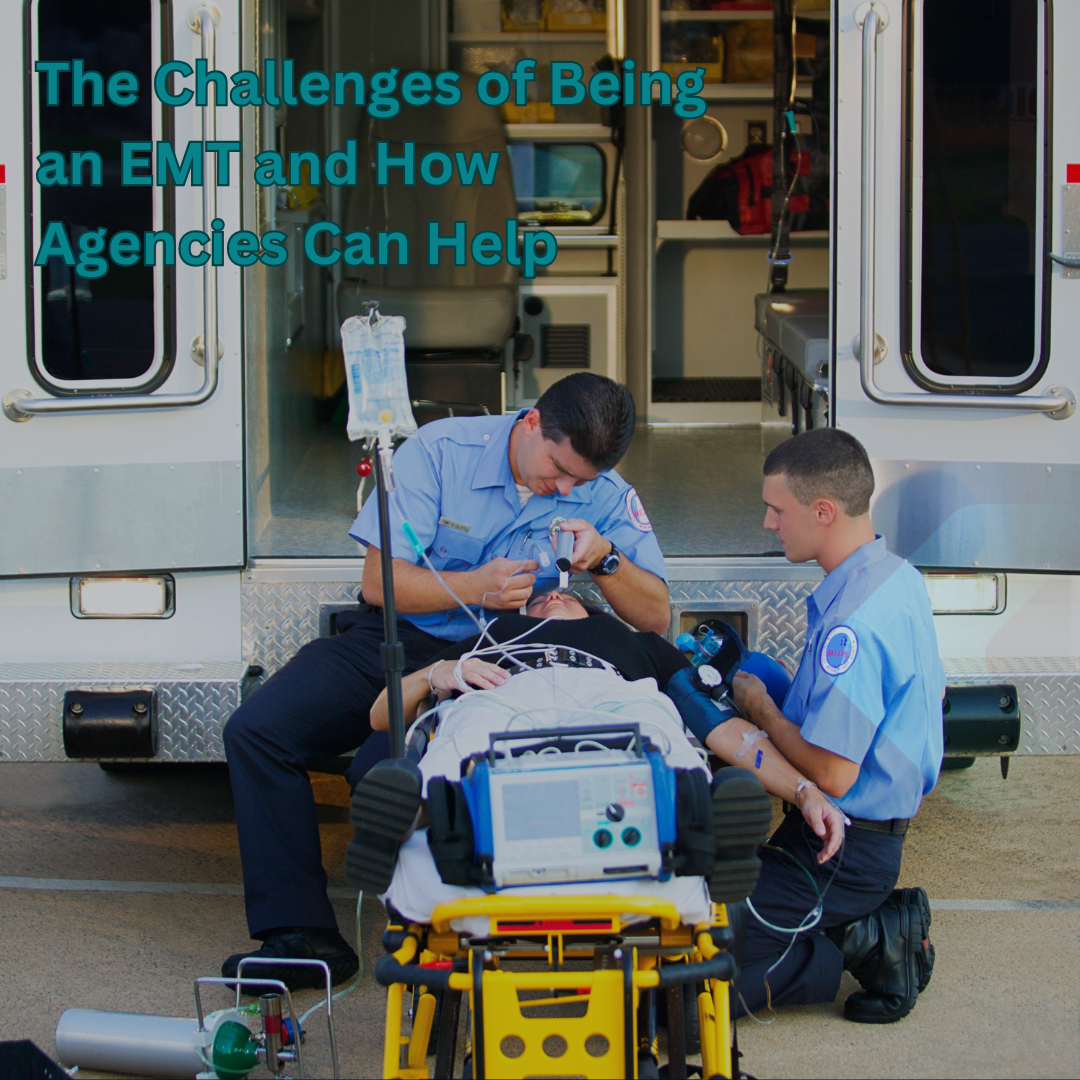The Challenges of Being an EMT and How Agencies Can Help
Emergency Medical Technicians (EMTs) are the backbone of pre-hospital emergency care. They provide life-saving treatment, work long shifts, and endure physically and emotionally demanding situations daily. However, despite their dedication, EMTs face numerous challenges that can impact their well-being and job performance. Agencies must recognize these challenges and implement solutions to support their workforce. One such solution is SmartProtect Public Safety Solutions, a comprehensive AI driven workforce management solution designed to enhance EMT safety, mental health, and job satisfaction.
The Challenges EMTs Face
Physical and Mental Strain EMTs routinely lift heavy patients, work in unpredictable environments, and endure long shifts with minimal rest. These physical demands can lead to chronic injuries, fatigue, and burnout. Additionally, the emotional toll of witnessing trauma, death, and distress can contribute to mental health issues like PTSD and depression.
High-Stress Environment Responding to emergencies requires quick decision-making under pressure. EMTs often work in chaotic scenes, including accidents, violent incidents, and natural disasters. The stress of making split-second decisions can lead to emotional exhaustion and cognitive fatigue.
Workplace Violence and Safety Risks EMTs frequently encounter aggressive patients, hostile bystanders, and dangerous situations. Workplace violence is a growing concern, with many EMS providers reporting physical assaults and verbal abuse. Ensuring safety while providing care is a constant challenge.
Low Pay and Financial Struggles Despite their critical role in healthcare, EMTs often earn lower wages than other medical professionals. Many work multiple jobs or excessive overtime to make ends meet, leading to further stress and fatigue.
Limited Mental Health Resources The culture in emergency services has historically downplayed mental health concerns. EMTs may hesitate to seek help due to stigma or lack of access to confidential resources. Without proper support, cumulative stress can lead to severe mental health issues.
How Agencies Can Support EMTs
Enhancing Workplace Safety Agencies must prioritize EMT safety by providing self-defense training, enforcing strict anti-violence policies, and equipping personnel with body cameras or safety alarms.
Promoting Mental Health Awareness Agencies should create a culture where seeking mental health support is encouraged. Providing access to peer support groups, licensed therapists, and crisis intervention teams can help EMTs cope with job-related stress. SmartProtect’s solution includes a mental health dashboard to ensure agencies are fully aware and proactively addressing staff mental health issues based on real-time data.
Increasing Wages and Benefits Advocating for better wages, overtime pay, and comprehensive benefits can improve job satisfaction and retention. Offering tuition reimbursement for advanced medical training can also motivate EMTs to further their careers.
Reducing Shift Fatigue Implementing reasonable shift lengths and mandatory rest periods can prevent burnout. Smart scheduling software such as SmartProtect, can ensure equitable shift distribution and adequate recovery time.
Conclusion
Being an EMT is one of the most challenging yet rewarding professions. However, without proper support, the physical and emotional toll can be overwhelming. Agencies must take proactive steps to protect their workforce through safety measures, mental health resources, fair wages, and innovative solutions such as SmartProtect. By doing so, they can ensure EMTs continue to save lives while maintaining their own well-being.


